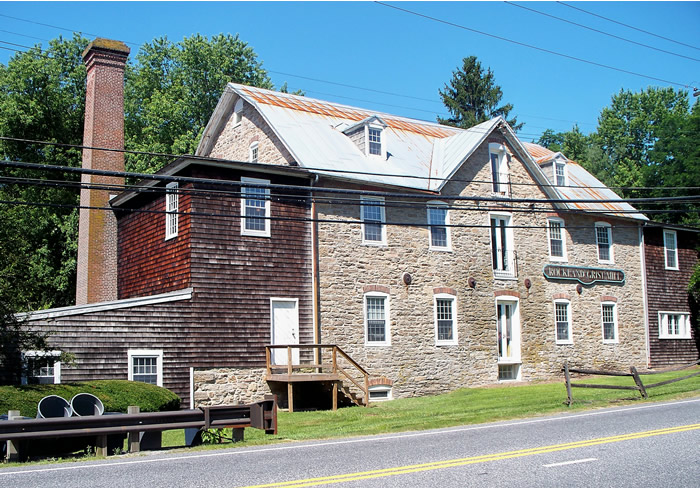
Rockland Grist Mill / Rockland Print Works / Rockland Black & Dye Works
Baltimore Co. | Maryland | USA
Watersource: Jones Falls Creek.
Rockland Grist Mill / Rockland Print Works / Rockland Black & Dye Works
Located at 2201 Old Court Rd, in Brooklandvile, Md., on the corner of Old Court Rd/Sh 133 and Falls Road/Sh 25.

The mill was built in the early 1800's, more precisely 1812, as a flour and corn mill on Richard Gist's former estate, Turkey Cock Hall. Richard was the father of Mordecai Gist, a hero of the Revolutionary War.
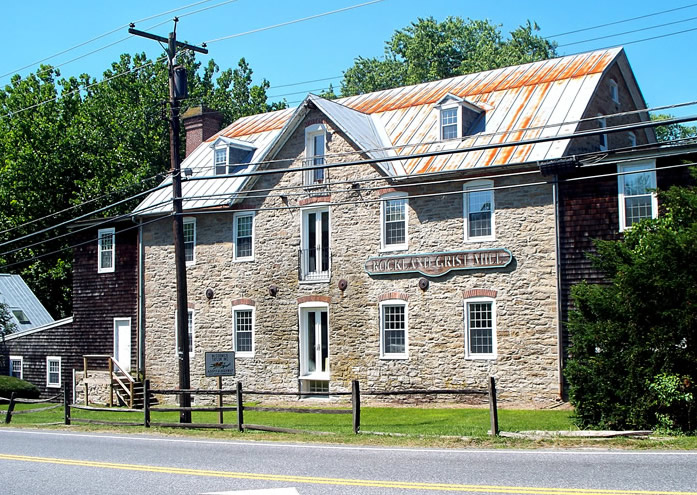
Dr.Thomas Johnson bought the mill in 1813. In 1831, the mill was converted into a calico printing mill by a Mr. Mellier. It was soon known as the Rockland Print Works/Robert Wright & Co.
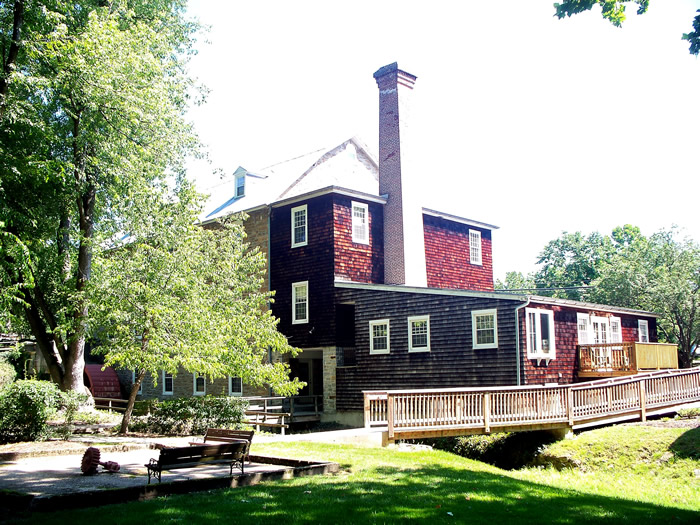
The mill was producing about 7,000-8.000 yds. of calico/diem.
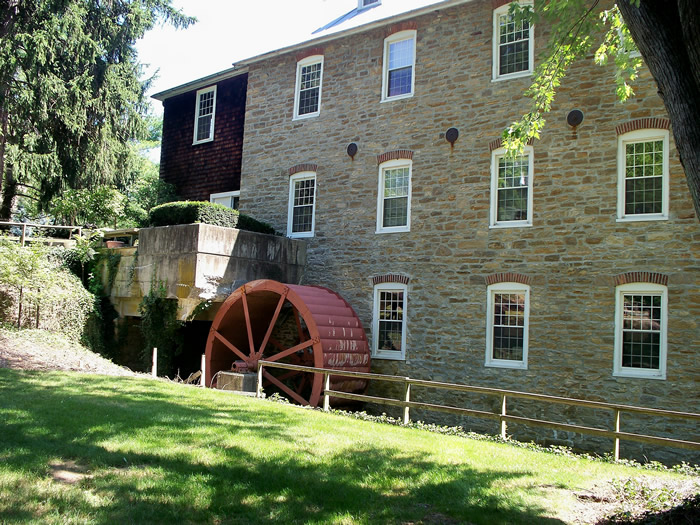
The water wheel powered the mill with a steam engine added later in case of low water flow.
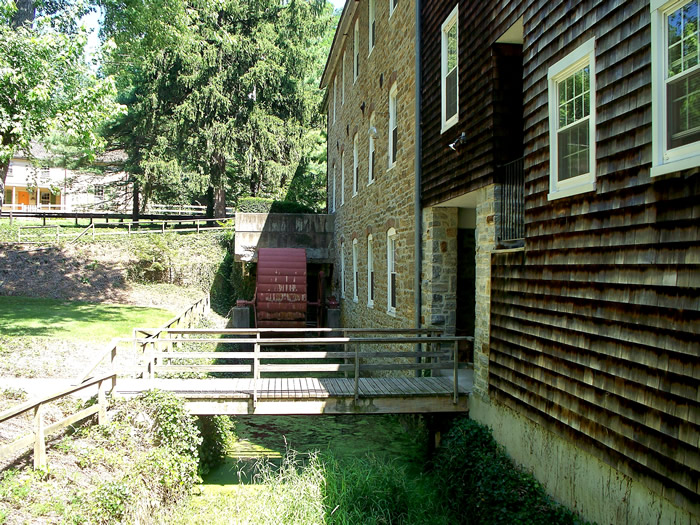
William Fell Johnson inherited the mill in 1842. The mill burned in 1857, a few years after being purchased by Richard Hook & Co.
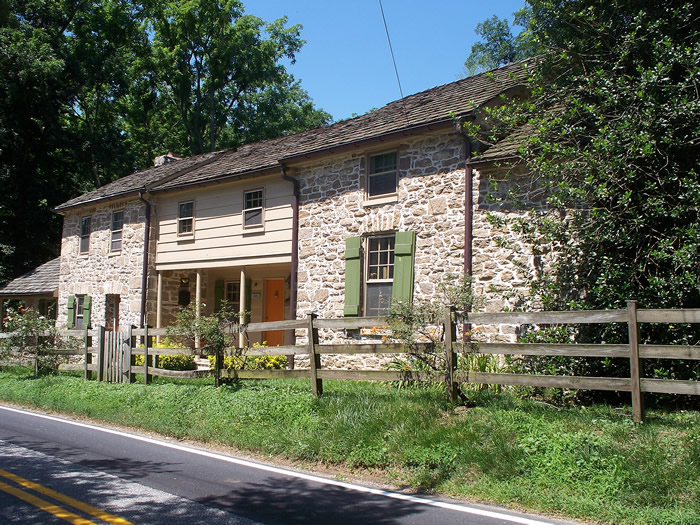
The fire of the mill, across the street from this public house or tavern, in 1857 was suspicioned to be arson involved.

Tavern across the road from the end of the mill.
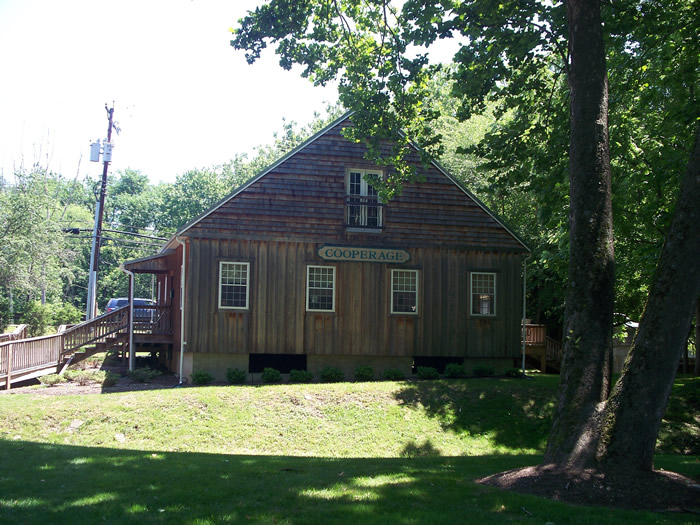
This structure is a reconstruction of a cooperage that had been on site in this location, but didn't survive the passages of time. The cooperage made barrels for the flour produced. Perhaps the calico printing and blacking and dyeing operations also resulted in the making of their own dyes,some to be sold and shipped via barrels.
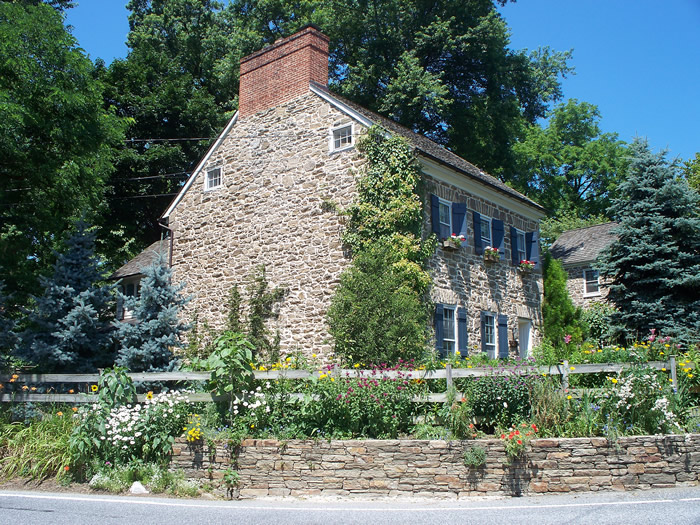
The miller's house across Old Court Road from the mill. The mill became the Rockland Black & Dye Works as part of the estate of W. Fell Johnson in 1877. A Mr. Boss manufactured needles at the mill at one time. Again, it became a flour mill under the teuteledge of Mr. Clark.
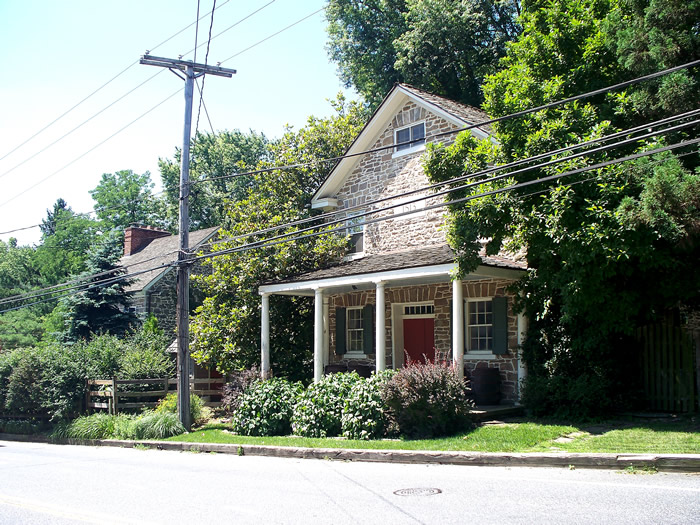
A Mr. Boss manufactured needles there at one time. Again, it became a flour mill under the teuteledge of Mr. Clark. The store of the Rockland community that evolved from the mill comlex. It is beside the miller's residence and also served as a Doctor's Office.
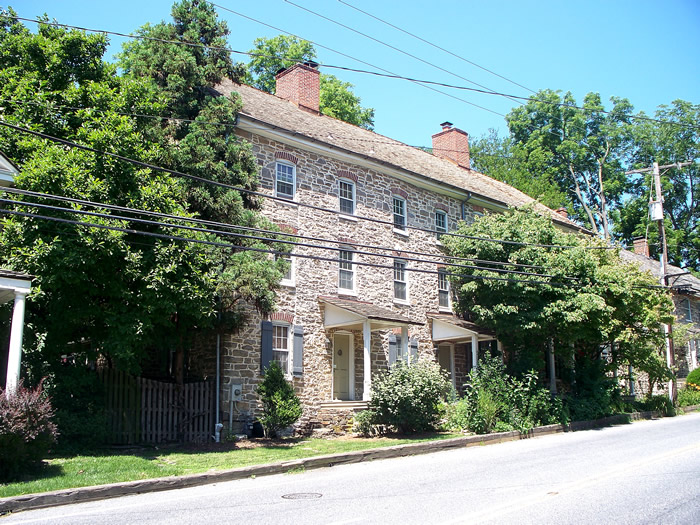
Thomas Wright bought the mill for a years duration in 1894, selling the next to James Bryan (Bryant), who also had another mill in the Brooklandville area. Next beside the Store are several stone roww-type houses that provided housing for the mill workers.
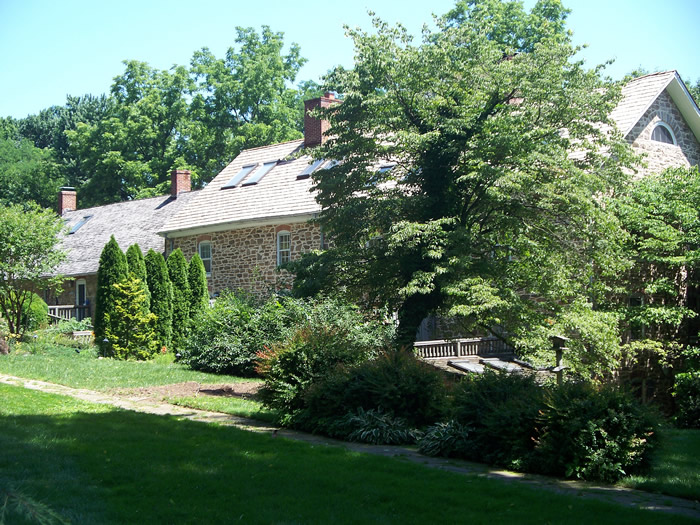
Moses Garrett bought the mill from Bryan in 1906. Garrett, from Delaware, of Snuff Mill fame, installed a 100hp Corliss engine along with a large brick smokestack for times of inadquate water flow. Garrett lost much fiancially when wheat from the west flooded the markets in the east following a failure of farmers to scale back their plantings after World War I. The photo shows a rear view of the worker's row housing.
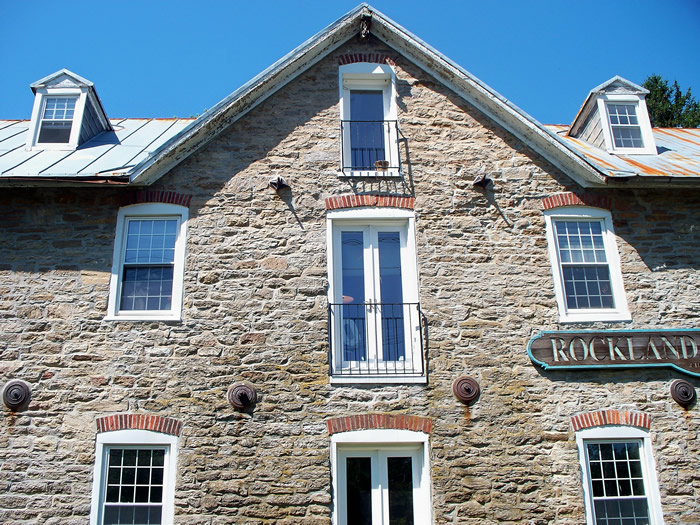
James Hooper tried to make artificial silk from 1922-1927, using New England paper pulp; but, the daring attempt failed to bring a profit.
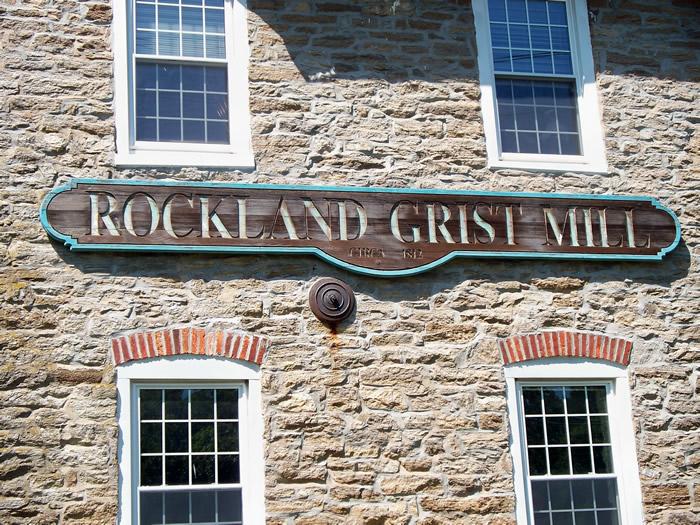
William Fell Johnson, descended from the Gists and the earlier Johnson owners, purchased the mill in 1927 and it was leased to J. S. Young Co., a subsiary of Standard Foods, Inc. The mill underwent restorations in 1880, 1930 and then in 1983.